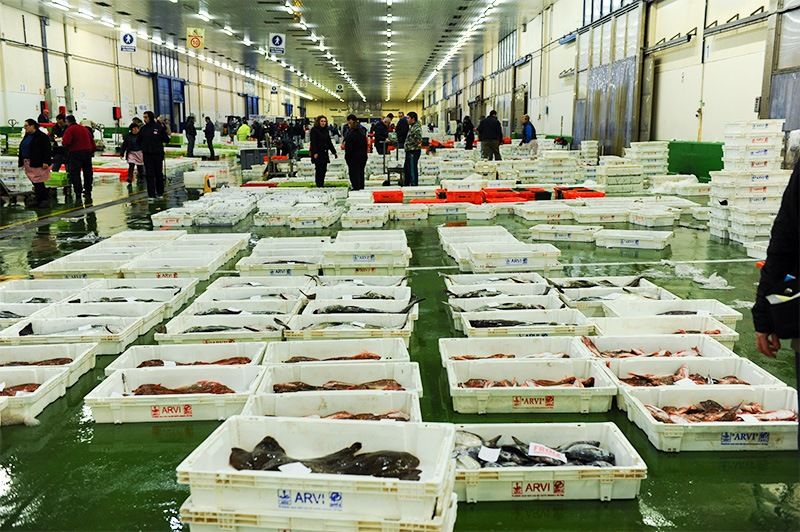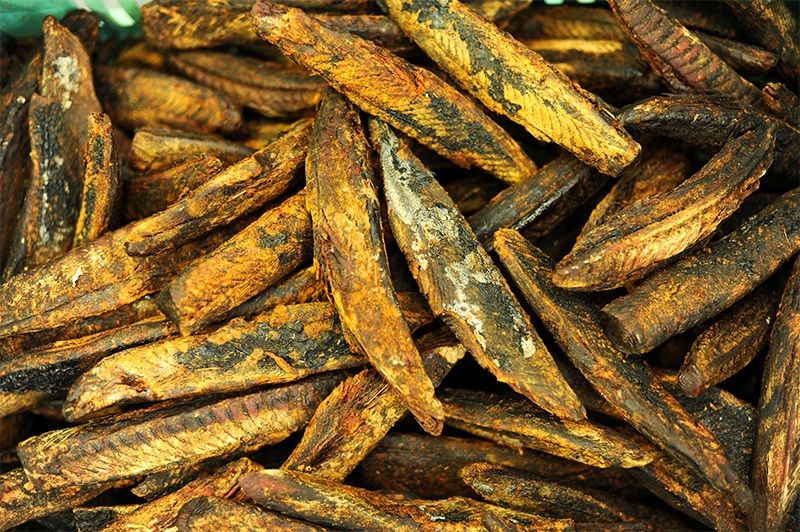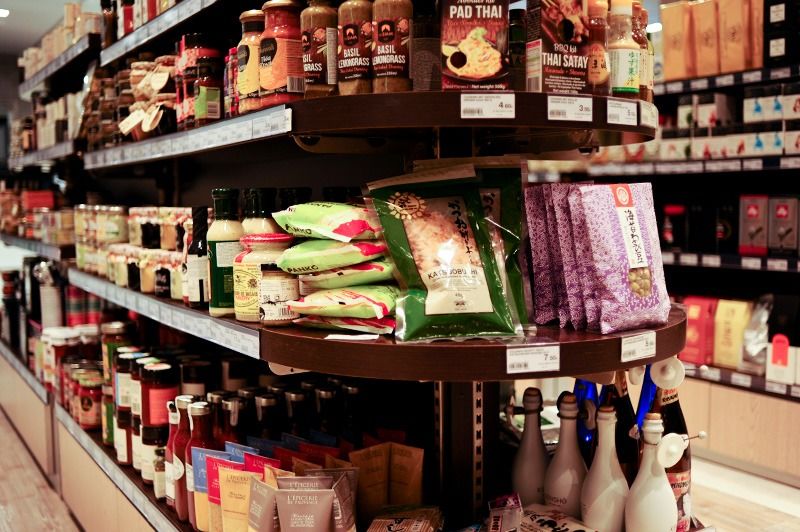
A Japanese Specialty Made in Spain
Culture- English
- 日本語
- 简体字
- 繁體字
- Français
- Español
- العربية
- Русский
Seasonings like miso and soy sauce, both fundamental to Japanese cuisine, have antecedents in China. Katsuobushi, though, has its roots entirely in Japan. An essential ingredient for making the dashi stock on which Japanese cuisine is based, this dry-smoked, cured skipjack bonito, particularly the shavings made from it, has been part of the Japanese diet for millennia.
The current production method for katsuobushi was perfected during the Edo period (1603–1868). In a process spanning several months, fresh katsuo (skipjack tuna) are filleted into quarters, boiled, deboned, and dry-smoked, steps repeated several times to produce what is called arabushi. Spores of a special mold are then applied to the arabushi. Left to mature, the resulting product, now called karebushi, has a refined, mellow flavor. The filets, which by now are rock-hard, are shaved on a plane to make katsuobushi, shavings of dried bonito.
 Karebushi, produced through the repeated application of mold.
Karebushi, produced through the repeated application of mold.
Wada Sachiyuki, third-generation head of Wadakyū, began producing katsuobushi in Spain three years ago. Wadakyū, established in 1925, is a long-established katsuobushi merchant that opened its first store in Tokyo’s Nihonbashi district. Today it has a katsuobushi production base in Makurazaki, Kagoshima Prefecture, and three sales outlets in Tokyo’s Tsukiji.
Seeking Expansion in Overseas Markets
Near the border with Portugal, 450 kilometers west of Madrid, lies Vigo, Spain’s largest fishing port. Wadakyu’s katsuobushi factory is a short distance away, in O Porriño.
 The Wadakyū factory in O Porriño.
The Wadakyū factory in O Porriño.
 Wadakyū president Wada Sachiyuki, wearing a parka bearing the name of Certa Viga, the popular local soccer club.
Wadakyū president Wada Sachiyuki, wearing a parka bearing the name of Certa Viga, the popular local soccer club.
Wada relates how the katsuobushi factory in Spain came about. Upon taking over as Wadakyū’s president in 2001, he explored the potential for developing a market for katsuobushi in China, an idea he had been toying with for some time. But sensing that washoku (Japanese cuisine) was becoming increasingly popular in Europe, he set his sights on that market and traveled to London in 2008. Since he believed that the Japanese market had matured, with no further prospects for growth, he decided to find new markets abroad, although some at the company were not in favor of such a venture.
At the time, katsuobushi was not available in EU countries, due to the fact that katsuobushi contains traces of benzopyrene, a substance found in the smoke emitted during the dry-smoking process. As EU food regulations banned benzopyrene, katsuobushi could not be imported from Japan. To get around this restriction and gain a foothold in the EU market, Wada had the katsuobushi scraped at a plant in Thailand to remove the benzopyrene on its surface, after which the product was shipped to London. And beginning in 2010, he arranged for a London food wholesaler to shave the katsuobushi to produce the familiar hanagatsuo shavings, which he then marketed throughout Europe in order to develop a market.
 Katsuobushi shavings are the source of the dashi that flavors many Japanese dishes.
Katsuobushi shavings are the source of the dashi that flavors many Japanese dishes.
Working to Conform to EU Food Regulations
In 2014, however, Wada decided to set up a katsuobushi production facility in the EU and shifted his base to Gdansk, the Polish port. Next, in order to eliminate benzopyrene emissions, he worked with a smoker equipment manufacturer to come up with a suitable solution. After a year of trial and error experimenting with little tunny, a relative of chub mackerel, they succeeded in devising a dry-smoking method that produced no benzopyrene. The exact process being proprietary information, Wada didn’t go into details, but it’s clear that a great deal of effort was involved. The equipment was tested in Germany and was certified as emitting no benzopyrene. To this day, Wada keeps a prototype of the equipment sheathed in plastic, a reminder of the huge amounts of time and money he expended on meeting the EU regulations.
“That was a really tough time for me,” he recalls. Not only was he involved in developing a benzopyrene-free production process, he was also setting up a production plant in Poland. When he submitted the application for a building permit, the Polish health ministry went over everything with a fine-tooth comb and mandated numerous changes to meet EU regulations. The application process took longer than Wada had expected, and in the meantime construction costs had ballooned over the initial estimate.
Wada ultimately gave up on Gdansk after a year and decided to build a plant in Vigo, the EU’s largest fishing port. Since he had already been sourcing skipjack tuna from Vigo, establishing a factory there was a natural outcome of his connection with the region.
 Vigo’s central fish market, where catches from the Atlantic are auctioned to wholesalers.
Vigo’s central fish market, where catches from the Atlantic are auctioned to wholesalers.
In early 2015, Wada headed for Spain to conduct registration procedures. Spain speedily granted the necessary permits, and soon two large trucks laden with equipment were on their way to Vigo. Occupying part of the space in a canning factory, Wada’s operation was up and running by April. The next year, seeking more spacious quarters and freedom to maneuver, Wada moved the operation to O Porriño, just inland from Vigo, where a staff of eight process 1 to 2 tons of skipjack tuna every day.
 Frozen skipjack tuna, the raw material for katsuobushi.
Frozen skipjack tuna, the raw material for katsuobushi.
 The thawed fish are filleted by hand.
The thawed fish are filleted by hand.
 After filleting, the fish are boiled for 1 hour. They are then deboned and dry-smoked.
After filleting, the fish are boiled for 1 hour. They are then deboned and dry-smoked.



